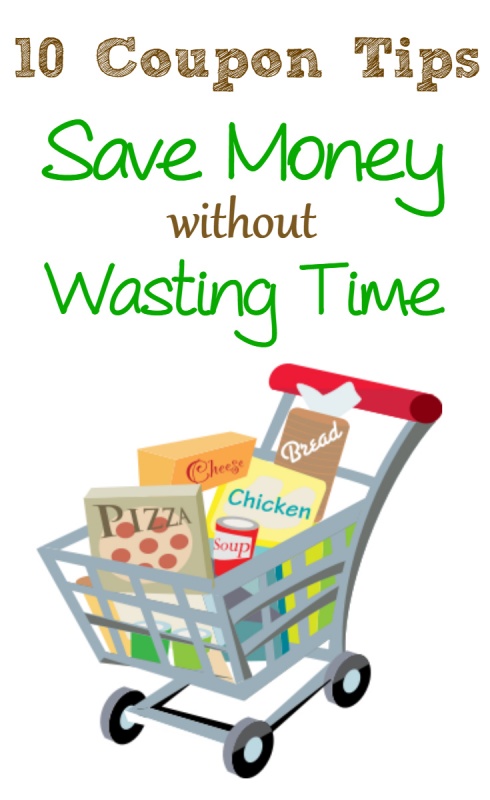Thank you MyCouponStacker.com for sponsoring this blog post. All opinions are my own.
I first stumbled across coupon blogs when I was 18. I already had an apartment with Ryan and we were still in the early stages of making and managing a budget. I didn’t buy my own groceries at all until we got our own place, so it took some adjusting to get used to how expensive food and household items can be. Some people had told me to buy store brand products in bulk to save money per ounce (or unit) but our apartment was really small and had only a few cupboards for food and dishes. I simply didn’t have the space to buy in bulk. So, when I came across coupon blogs that taught me that I could save money on groceries while buying smaller packages I was drawn in.
For a few days I spent all my time reading blog posts about how to coupon the best. It was all exciting but also overwhelming. I came across the TV show Extreme Couponing and was shocked at how long some of the couponers on there would spend preparing to shop. I didn’t want to spend 8 hours a week just planning a shopping trip because for me that much time wasn’t worth the savings. It took a few months of trial and error, but eventually I learned several ways to efficiently use coupons to save money on groceries quickly and easily. I have friends and family members who tell me that they think my couponing is awesome, but the #1 reason they give for not doing it themselves is “it seems like too much work!” so I thought sharing my tips for making couponing quick & easy might be of interest to other couponers or those who are considering beginning to use coupons.
10 tips for saving money on groceries with coupons quickly & easily.
1. Learn one store to start with. The “rules” of couponing at any given store are determined by that store’s coupon policy. If you are new to using coupons, choose to learn the coupon policy for that store and get it down pat before trying to use coupons elsewhere. Drugstores like CVS and Walgreens can be great places to save with coupons, but their coupon policies are more complex than most grocery stores, so I’d recommend learning those after you’re comfortable using coupons at a grocery store.
2. Keep a schedule for grocery shopping. Most stores will have sale ads that run for an entire week, but some will offer a handful of special deals for just two days. When you’re new to using coupons, it can be tempting to make multiple shopping trips per week just to get that one good deal during the two day sale, but if you don’t live right next to the store you’ll be using extra gas, and you’ll most likely be tempted to buy another item or two while there on your second trip. For most households, making one shopping trip per week is reasonable. I usually only go twice a month but I don’t have children so its more doable for my household.
3. Prepare one day in advance, don’t print throughout the week. When I first started using coupons, I was glued to coupon blogs each day to see which new coupons came out online or what sales were coming. I realized after a while that I was wasting time looking at deals that I sometimes would never take advantage of because they would expire before I got to the store next. I now spend 20-30 minutes preparing for a grocery trip before I go, so I don’t waste my time looking at expired deals or coupons for items that are no longer on sale.
4. Shop at one store per trip. While it’s true that if you only bought the VERY best deals from each of four stores each week, your grocery bill would be lower. However, you need to consider the cost of gas, the extra time to run to multiple stores and whether you’ll see and purchase an extra item or two at each store that you stop at. For me, I force myself to choose one store per week (whichever has the best deals) because it helps me avoid temptation at buying not-on-the-list items at more than one store plus preparing for my trip is easier when I am only looking at deals from one store.
5. Get coupons delivered to your door. Of course, the cost of the newspaper is an important factor to consider but usually a year long subscription to a newspaper with magazines is cheaper than buying the paper from a local store each week. This also prevents you from having to drive to the store to get the paper.
6. Use MyCouponStacker.com to have online coupons for the brands and items that your household uses sorted out on their website for you. When you first log in, you’ll be asked which stores you shop at, and which categories you shop at. For example, I was able to tell the system that I don’t have a cat, and my family doesn’t use any dishwasher products. Now when I log in I am shown offers for my stores and the product categories that I shop from, without having to weed through coupons for products like dishwasher detergent or cat food that I never purchase.
7. Don’t buy things you don’t need. This seems obvious at first, but when I first started using coupons and the first few items were available at my store completely for free, I was tempted to “buy” them just because they were free. This is of course a waste of time unless you know someone who will use the product or regularly donate items to local charities or food banks.
8. Don’t buy more than you’ll use in a month. This is a bit controversial, because many people recommend buying a 3 month (or 12 week) supply of products. The 3 month theory is based on the idea that most grocery stores will have a product on sale and a coupon available for the product (so it’ll be at its “rock bottom” price) at least once every 3 months. I tried doing this at first, but finding room to have 3 months of all the food items we purchase became a problem. I also found that we don’t always use groceries in a consistent way. We may have went through four boxes of crackers in the past 3 months, but we may only eat two in the next 3 months. So, I wound up throwing away food and cut back to buying a 1 month supply which saves me space, time and sanity. I’ve also realized that most products go on sale more than once every 3 months, many go on sale and have coupons at least once per month so an “in between” method would be purchasing a 1, 2, or 3 month supply of an item depending on how often you see it go on sale instead of automatically buying a full 3 months of every single item.
9. Use mint or another app to track how much you spend on groceries. You won’t be able to tell if you’re truly saving money unless you’re closely tracking your grocery expenses. You can do this with a notebook and receipts if you want or you can use an app (I like the mint app) which automatically keeps track of your expenses for you.
10. Keep an eye on sale ads over time. You may find that the stores you shop at regularly include certain items in their ad, but not always for the same price. For example, a 12 pack of soda might in a sale ad one week at 3/$9, and the next week be “on sale” for 2/$8. You can’t safely assume that an item is truly at a great price just because it’s listed in a sale flyer.
Do you use a quick & easy coupon style? I’d love ot hear how you save money without spending hours each week planning your trips!
Hi there! I am Emily Evert, the owner of Emily Reviews. I am 28 and live in a small town in Michigan with my boyfriend Ryan and our two pugs. I have a large family and I adore my nieces and nephews. I love reading memoirs, and learning about child development and psychology. I love watching The Game of Thrones, Teen Mom, Sister Wives and Veep. I like listening to Jason Isbell, John Prine, and other alt-country or Americana music. I created Emily Reviews as a creative outlet to share my life and the products that I love with others.
This post currently has 2 responses.
-
I rarely clip coupons from the Sunday paper like I used to. I do use digital coupons and print some from online to save. I just don’t eat processed food anymore so many of the coupons I can’t use. Veggies are inexpensive here and I don’t have a family to cook for so it works for me. I think having a general idea of what things should cost is the best advice. Buy what’s on sale and skip the snacks-you’ll be healthier for it!




















This sounds like something I would be interested in!